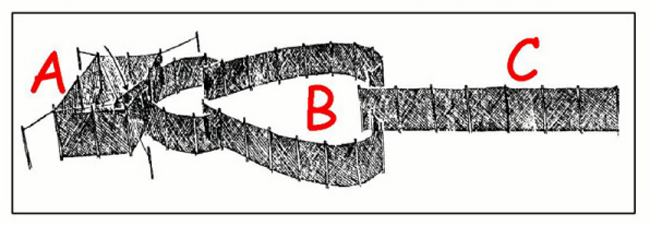As defined in Maryland regulation, a pound net means a fixed entrapment gear consisting of:
(a) A net body or crib measuring at least 16 feet long by 16 feet wide at the surface of the water with a netting floor and open top; (b) Mesh webbing with a twine size of #12 or larger; (c) At least one heart leading into the crib; and (d) A leader or hedging. Pound net sites in the Maryland portion of the Chesapeake Bay and its tributaries must be registered with the Department of Natural Resources. Not all registered sites are fished each year. Waterman may chose to rotate their active sites from year to year. Few nets actually remain in the water year round
(with permission), the majority of pound nets are set and fished between April and November. Nets are typically set in 12 - 20 feet of water; however, some fisherman use deeper sets (20 -35 feet) but this is rare. Pound nets catch a wide variety of Bay finfish. The harvest varies by season and may consist of
Striped Bass,
Bluefish,
catfish,
croaker,
flounder,
menhaden,
perch,
Spot and
Weakfish. The finfish harvest from pound nets is a valuable contribution to the seafood industry and your dinner table.
The following is a brief description of pound net gear.

A pound net is a visible passive (stationary) gear type used for the live-entrapment of fish species.
This gear is constructed using an arrangement of fiber netting supported upon a series of stakes or pilings.
A pound net consists of three main sections:
- A crib/pound (A) which is the enclosed end where the entrapment takes place.
- A heart (B) which is actually a net in the shape of a heart that aids in funneling fish into the crib.
- A hedging/leader (C) which is a long straight net that leads the fish off shore towards the crib.
Fish swimming along shore are retuned towards the crib by the hedging, guided into the heart, and then into the crib where they are removed periodically using various techniques.
For further information, email
Casey Marker or call 410-279-8369.